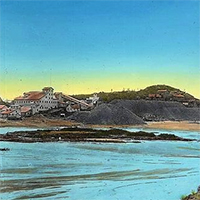Assessing the potential environmental factors affecting cladoceran assemblage composition in arsenic-contaminated lakes near abandoned silver mines

All claims expressed in this article are solely those of the authors and do not necessarily represent those of their affiliated organizations, or those of the publisher, the editors and the reviewers. Any product that may be evaluated in this article or claim that may be made by its manufacturer is not guaranteed or endorsed by the publisher.
Authors
Silver mining has a long history in Cobalt (Ontario, Canada), and it has left a complex environmental legacy where many lakes are contaminated with arsenic-rich mine tailings. In this exploratory survey, we examined subfossil Cladocera remains in the surface sediments of 22 lakes in the abandoned mining region to assess which environmental variables may be influencing the recent assemblage structure. Further, using a “top-bottom” paleolimnological approach, we compared the recent (top) and older (bottom) assemblages from a subset of 16 lakes to determine how cladoceran composition has changed in these lakes. Our regional survey suggests that the cladoceran assemblages in the Cobalt area are primarily structured by differences in lake depth, while site-specific limnological characteristics, including those related to past mining activities, may have limited roles in shaping the recent cladoceran compositions. The top-bottom paleolimnological analysis suggests that the cladoceran assemblages have changed in most lakes around Cobalt, however the magnitude and nature of changes varied across the study sites. As with most regional biological surveys, the responses to historical mining activities were not uniform across all sites, which further emphasizes the importance of considering site-specific limnological characteristics and multiple environmental stressors when assessing the impacts of mining pollution.
Edited by
Diego Fontaneto, CNR-IRSA Water Research Institute, Verbania, ItalySupporting Agencies
Natural Sciences and Engineering Research Council of CanadaHow to Cite

This work is licensed under a Creative Commons Attribution-NonCommercial 4.0 International License.






